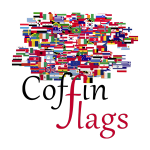Description
 Fiji, officially the Republic of Fiji, is an island country in Melanesia, part of Oceania in the South Pacific Ocean about 1,100 nautical miles (2,000 km; 1,300 mi) northeast of New Zealand’s North Island. Its closest neighbours are Vanuatu to the west, New Caledonia to the southwest, New Zealand’s Kermadec Islands to the southeast, Tonga to the east, the Samoas and France’s Wallis and Futuna to the northeast, and Tuvalu to the north. Fiji consists of an archipelago of more than 330 islands—of which 110 are permanently inhabited—and more than 500 islets, amounting to a total land area of about 18,300 square kilometres (7,100 sq mi). The most outlying island is Ono-i-Lau. The two major islands, Viti Levu and Vanua Levu, account for 87% of the total population of 883,483. The capital, Suva, on Viti Levu, serves as the country’s principal cruise ship port. About three-quarters of Fijians live on Viti Levu’s coasts, either in Suva or in smaller urban centres such as Nadi (where tourism is the major local industry) or Lautoka, where the sugar-cane industry is paramount. Due to its terrain, the interior of Viti Levu is sparsely inhabited.
Fiji, officially the Republic of Fiji, is an island country in Melanesia, part of Oceania in the South Pacific Ocean about 1,100 nautical miles (2,000 km; 1,300 mi) northeast of New Zealand’s North Island. Its closest neighbours are Vanuatu to the west, New Caledonia to the southwest, New Zealand’s Kermadec Islands to the southeast, Tonga to the east, the Samoas and France’s Wallis and Futuna to the northeast, and Tuvalu to the north. Fiji consists of an archipelago of more than 330 islands—of which 110 are permanently inhabited—and more than 500 islets, amounting to a total land area of about 18,300 square kilometres (7,100 sq mi). The most outlying island is Ono-i-Lau. The two major islands, Viti Levu and Vanua Levu, account for 87% of the total population of 883,483. The capital, Suva, on Viti Levu, serves as the country’s principal cruise ship port. About three-quarters of Fijians live on Viti Levu’s coasts, either in Suva or in smaller urban centres such as Nadi (where tourism is the major local industry) or Lautoka, where the sugar-cane industry is paramount. Due to its terrain, the interior of Viti Levu is sparsely inhabited.
The national flag of Fiji was adopted on 10 October 1970. The state arms have been slightly modified but the flag has remained the same as during Fiji’s colonial period. It is a defaced sky-blue “Blue Ensign” (the actual Blue Ensign version of the flag is the Government ensign). It has remained unchanged since Fiji was declared a republic in 1987, despite calls from some politicians for changes. The flag’s bright blue background symbolises the Pacific Ocean, which plays an important part in the lives of the islanders, both in terms of the fishing industry, and the huge tourist trade. The Union Jack reflects the country’s links with the United Kingdom. The shield is derived from the country’s coat of arms, which was granted by Royal Warrant in 1908. It is a white shield with a red cross and a red chief (upper third of a shield). The images depicted on the shield represent agricultural activities on the islands and the historical associations with the United Kingdom. At the top of the shield, a British lion holds a cocoa pod between its paws. The first quarter is sugar cane, the second quarter is a coconut palm, the third quarter is a dove of peace, and the fourth quarter is a bunch of bananas.








Reviews
There are no reviews yet.